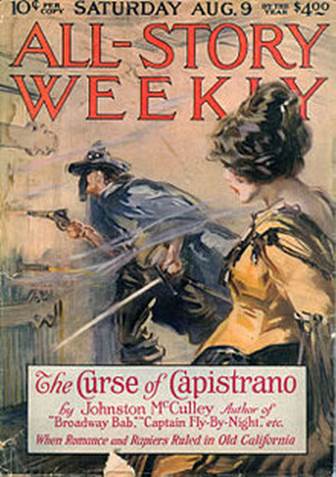| This Week’s Topic… | |||

Best viewed in
|
Zoro was Irish
|
||
|
In 1640 he was sent to Mexico to spy on the new viceroy the Marquis of Villena. But, it's also possible that it allowed him to get away from a young woman he had been living with and who was pregnant with his child. Lamport's older brother John, now a Franciscan and living in Spain, had urged the sinful couple to marry before he left for the new world. The new viceroy in Mexico was suspected of having sympathies with Portugal, and it was rumored that areas of Mexico were on the brink of rebellion against Spain. In response to the abuses of the Inquisition and local officials some time in 1641 Lamport is said to have begun plotting to overthrow the viceroy with the help of a former viceroy, Marquis Cadereyta, and in hope of enlisting the Indians, blacks, and creole merchants in an uprising. In 1642 he was betrayed and was arrested by the Inquisition. Among the charges against him was that of conspiring against Spain to liberate Indians and black slaves, as well as closely associating with Indian witch doctors and dabbling in astrology. He was even accused of trying to set himself up as king of an independent Mexico.After seven years in prison he escaped, but rather than run, he remained in Mexico City and was recaptured just a few days later after several nights of plastering the city walls with pamphlets denouncing the Inquisition. While he was free the crown printed and distributed their own pamphlets denouncing him, which has been interpreted by some as suggesting they were anticipating his escape and that the crown hoped an escape would give them an excuse for more severe charges against him. But it took another nine years of prison before they condemned him to death as a heretic and to be burned at the stake. He ended up succeeding in strangling himself before the flames were lit in 1659. In the end he became a quiet, but powerful symbol. Like the comic book Zorro he was seen as a hero in the darkness, who challenged and ridiculed the Inquisition and won the sympathies of the Indians, the underprivileged and Crypto-Jewish (passing as Christians but practicing Jewish) merchants. In his last will and testament Lamport proclaimed that God’s judgment would come and that the archbishop of Mexico City would be engulfed by the fires of hell. During a rebellion among the blacks and mulattos of Mexico City in 1666 a drunkard is said to have gone about shouting that the archbishop of Mexico City was burning in hell, as Lamport had predicted. |
|||
